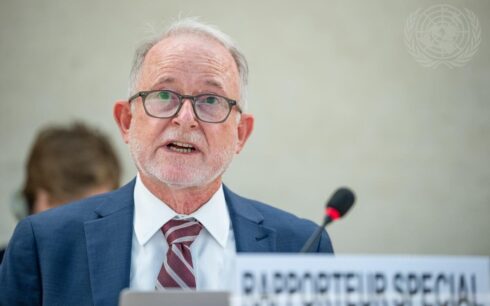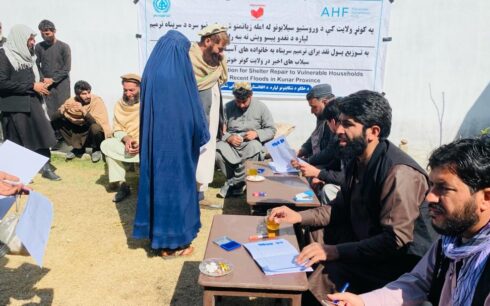Afghanistan Journalists Center (AFJC) said in its annual report, on the occasion of national journalists day, that the situation of media freedom is deteriorating in the country, and that cases of violence and intimidation of journalists have doubled compared with the previous year.
The center says it has documented 237 cases of violations of media freedom and rights of journalists that include threats, arrests and violent treatment. In the previous solar year, 1400 (March 2021 to March 2022), 117 cases were documented.
The watchdog says that one journalist was killed in a targeted attack over the past year, three less than documented in the previous year.
The report says that except for last week’s explosion in Balkh in which two journalists, including Husain Naderi of Sadai Afghan news agency, were killed, and 19 more were wounded, the majority of other incidents involved members of Taliban institutions, especially intelligence and security members.
The report says that of the total incidents documented in 1401 solar year, 113 cases included threats, mistreatment and abuse of journalists.
The report shows that 45 of the incidents happened in Kabul, nine in Nangarhar; eight in Faryab, seven in Kandahar, six in Kapisa, four in Balkh, four in Ghazni, seven in Faryab, three in Ghor, three in Parwan, three in Samangan, three in Badghis, two cases each in Panjshir, Kunduz, Helmand and Sar-e-Pul, and one case each in Logar, Paktika, Kunar, Farah and Takhar provinces.
Over the past 12 months, at least eight cases of physical violence and beating of journalists were documented, the center says.
Four of the cases happened in Kabul, one in Balkh, one in Samangan, one in Nangarhar, one in Badghis and one case in Zabul. Moreover, 21 cases were reported where journalists were wounded, including 19 who were wounded in last week’s explosion in Balkh.
The report says that the organization has documented 94 cases of temporary arrest of journalists, ranging from one hour to a few hours and even a few months. Of these, two journalists have been in Taliban custody for the past two months.
The report also shows that half of the arrests (49 cases) happened in Kabul, 11 in Paktia, seven in Faryab, six in Kandahar, three in Herat, three in Samangan, two in Uruzgan, two in Ghazni, two in Ghor, one in Kapisa, one in Helmand, one in Balkh, one in Takhar, one in Nangarhar, one in Khost, one in Badghis, one in Farah and one in Zabul.
Murtaza Behbudi, an Afghan-French journalist, and Khairullah Parhar, a sports reporter from Hamisha Bahar TV, are still in Taliban custody.
The findings of the AFJC reveal that Taliban’s security agencies, including the intelligence, and vice and virtue members have been directly and indirectly involved in arrests, intimidation, threatening of journalists and suppressing media freedom and freedom of expression.
The report shows that the environment for preparing free and investigative reports and challenging programs has been restricted due to restrictions on access to information, threats and fear among journalists of being arrested and tortured by the Taliban, and that self-censorship has reached its peak.
The AFJC has asked the Taliban to implement a media law and the law on access to information to ensure a sound environment for free media activities based on those laws in Afghanistan.





